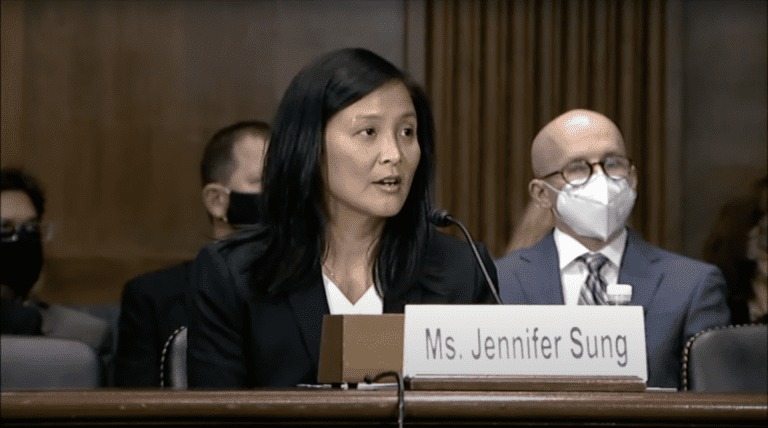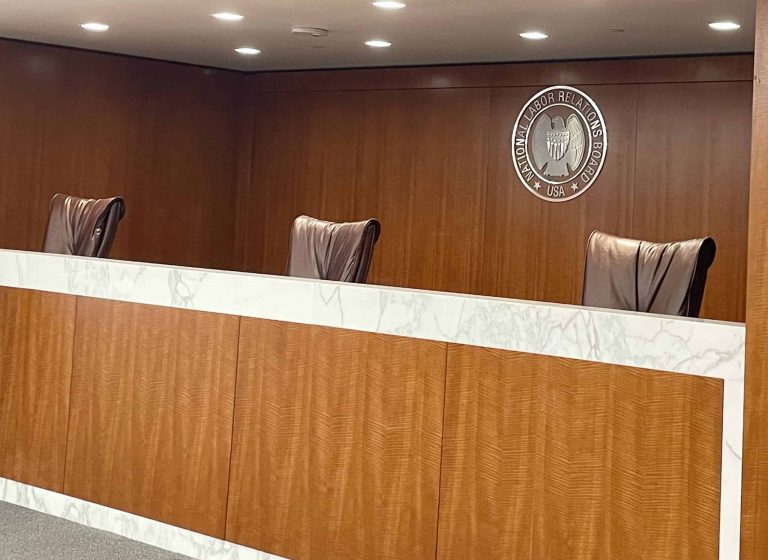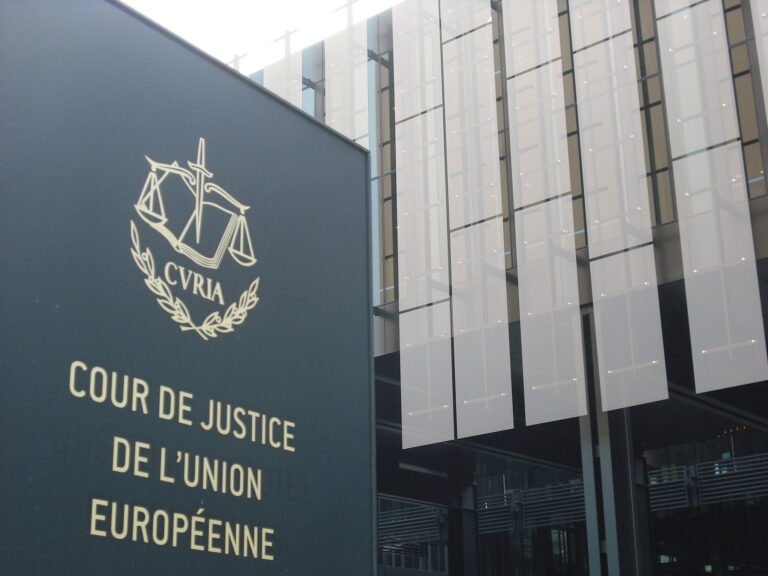At-will employment is out of favor. In recent polling from Alexander Hertel-Fernandez, Data for Progress, and the Omidyar Network, a striking 68% of respondents said that employers should be limited in their discretion to fire workers, rejecting the default rule of near-unfettered control.
In line with public opinion, momentum to replace the at-will rule is growing. Proposals for a federal law against termination without “just cause” appeared this year in Clean Slate for Worker Power and in Senator Bernie Sanders’s 2020 presidential platform. In the wake of the pandemic, just cause has emerged as a prominent response to retaliation against workers who blow the whistle about workplace hazards. And after the Supreme Court’s decision in Bostock v. Clayton County, several commentators (myself included) called attention to the limits of anti-discrimination law in an at-will world.
Most significantly, the movement is gaining traction on the ground. In 2019, Philadelphia parking lot workers secured protections against wrongful discharge through a municipal just cause law. In February, the New York City Council heard testimony on a bill to provide similar protections for fast food employees, and it could soon adopt just cause for essential workers amidst the pandemic.
These recent efforts are significant, but they are not unprecedented. For one, at-will employment has long been subject to statutory exceptions, including protections for union organizing, whistleblowing, and discrimination based on protected categories. In the mid-to-late twentieth century, state courts also created a host of new carveouts, finding terminations unlawful when they violated “implied-in-fact” contracts, “public policy,” and the “duty of good faith and fair dealing.”
But the important precedent for the current moment is the just cause movement that these exceptions spurred. With new opportunities under the common law for workers to challenge unfair terminations, management in the 1980s feared cascading liability. Seizing an opportunity for compromise, reformers campaigned into the 1990s for a wrongful discharge regime that would mollify employers but finally undo the at-will rule.
Their efforts came up short. In 49 states (all except Montana), the presumption remains that workers can be fired for any or no reason. The scholarly explanation for this failure – the complex interplay of reformer, employer, union, and attorney interests – is important to understanding why a deeply unpopular doctrine has persisted for so long. It can also help us envision how the new moment may be different.
The 1980s-90s Movement
Scholarly accounts of the 1980s-90s movement for wrongful discharge laws emphasize the central role played by “reformers” – most notably, legal academics. In 1976, Professor Clyde Summers advocated for a legislative compromise to the problem of wrongful discharges. His arbitration-based system would have provided workers with job security while clarifying employer obligations and cabining remedies. Summers’s proposal gained widespread attention among other legal thought leaders, especially as state courts increasingly embraced new common law exceptions to the at-will rule. The judicially-created nature of the exceptions made liability unpredictable, and reformers sensed an opportunity to bring employers on board.
The chosen path for reform was the National Conference of Commissioners on Uniform State Laws, better known as the Uniform Law Commission (ULC). The ULC is a private association, the mission of which is to bring leading legal thinkers together to draft laws aimed at widespread adoption. In 1991, the ULC produced the Model Employment Termination Act (META). If adopted by states, META would have barred employers from discharging employees without “good cause” and allowed redress before a neutral, state-appointed arbitrator. But, among other limitations, it would have extinguished employees’ common law claims and prohibited awards for pain and suffering, emotional distress, defamation, fraud, punitive or compensatory damages.
META never attracted sufficient support to win enactment (Montana’s wrongful discharge statute came four years before). Despite some fears about increased liability, employers still preferred self-regulation to the constraints of a sweeping statute. Even if it would have benefited employees, META also failed to arouse support from unions and plaintiffs’ attorneys. Some unions still embraced the “substitution theory,” the idea that enhanced employment law protections made it harder to persuade workers about the need for unionization. By 1987, the AFL-CIO had issued a policy statement supporting a wrongful termination law, but it never became a federation priority. For their part, plaintiffs’ attorneys benefited from the wave of common law exceptions and the attendant damage awards they could win for workers before a jury. In their view, META substituted this fruitful set of claims with a weak standard and inadequate remedies.
The Modern Movement
Postmortems of the 1980s-90s movement indicate that its compromise-driven, reformer-led model divided the broad workers’ rights coalition of employees, unions, and attorneys. The modern movement is already taking a different form.
One fundamental difference is that the recent just cause efforts in Philadelphia and New York are a reaction to workers’ economic precarity, not to doctrinal uncertainty and management’s fears of liability. While the 1980s-90s movement originated with top-down reformers, the new efforts have been led by workers and worker advocates, including 32BJ SEIU, Fast Food Justice, the National Employment Law Project, and the Center for Popular Democracy.
For unions, the reasons to support wrongful discharge legislation have become clear. The appeal of the “substitution theory” had already faded by the 1980s-90s, but unions still did not see the need to prioritize just cause. Today, the calculus has changed. More unions have embraced their role as advocates for working people beyond their bargaining units. Unions may thus be willing to back wrongful discharge legislation simply because it benefits employees broadly. While improving conditions for workers is the goal, just cause laws have collateral benefits for organized labor, too. First, a background rule of just cause could weaken employer opposition to unionization since management’s discretion to terminate workers will already be limited by law. Second, just cause laws give bite to our toothless labor law by providing real protection for workers who face retaliation for union organizing. Finally, when unions publicly champion just cause laws, they demonstrate to unorganized workers how a union in their workplace could fight for them.
Plaintiffs’ attorneys also have new motivation to support wrongful discharge legislation. The wave of common law exceptions to the at-will rule has slowed, giving management opportunities to adapt (e.g., editing handbooks, changing evaluation processes) and depriving workers and their attorneys of avenues to litigate. Moreover, the allure of large damage awards from common law claims has vanished as employees increasingly sign away their right to jury trials. In this changed context, the legislation now proposed is more of an opportunity for plaintiffs’ attorneys than a threat. The Philadelphia law and New York bills provide for a private right of action and allow for recovery of the full range of damages. They preserve anti-discrimination claims (adding what Professor Katie Eyer calls an “extra-discrimination remedy”), and, unlike META, they do not displace common law remedies. Workers and their attorneys only have a legal claim to gain.
As the modern movement for wrongful discharge legislation accelerates, compromise with employers may become necessary. But unlike the reformer-led efforts of the 1980s-90s, compromise is not the starting goal. This new moment is an opportunity for a unified coalition of employees, unions, and attorneys to end the cruelty of the at-will employment regime once and for all.










Daily News & Commentary
Start your day with our roundup of the latest labor developments. See all
December 22
Worker-friendly legislation enacted in New York; UW Professor wins free speech case; Trucking company ordered to pay $23 million to Teamsters.
December 21
Argentine unions march against labor law reform; WNBA players vote to authorize a strike; and the NLRB prepares to clear its backlog.
December 19
Labor law professors file an amici curiae and the NLRB regains quorum.
December 18
New Jersey adopts disparate impact rules; Teamsters oppose railroad merger; court pauses more shutdown layoffs.
December 17
The TSA suspends a labor union representing 47,000 officers for a second time; the Trump administration seeks to recruit over 1,000 artificial intelligence experts to the federal workforce; and the New York Times reports on the tumultuous changes that U.S. labor relations has seen over the past year.
December 16
Second Circuit affirms dismissal of former collegiate athletes’ antitrust suit; UPS will invest $120 million in truck-unloading robots; Sharon Block argues there are reasons for optimism about labor’s future.